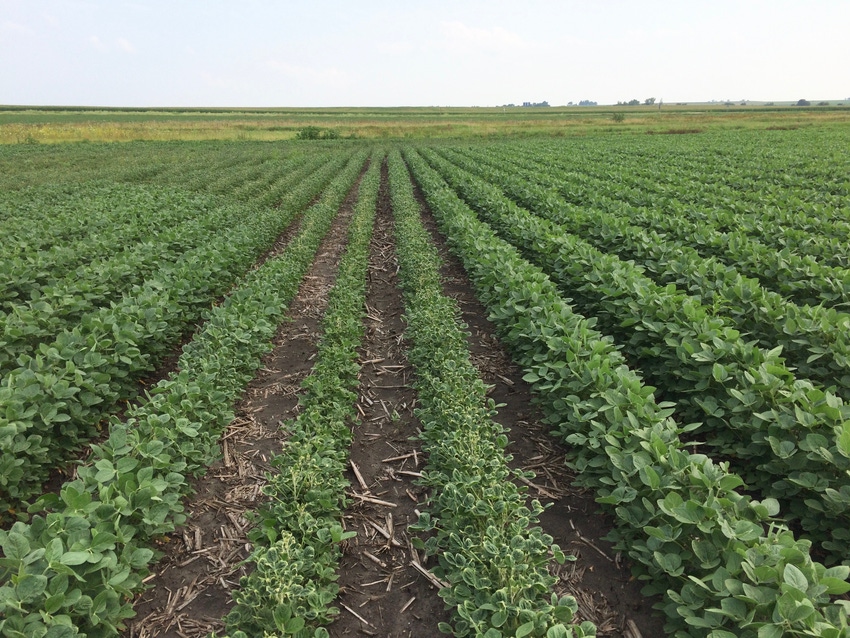August 17, 2018

By Bob Hartzler, Iowa State University Extension and Outreach, Integrated Crop Management News
I have been reluctant to provide estimates of soybean acres damaged from dicamba applied to Xtend soybean due to the difficulty in developing a realistic number of affected acres. While there has been a significant number of acres damaged by dicamba, I am sure it is less than 5 percent of Iowa’s nearly 10 million soybean acres. Due to this relatively small number of acres affected (in relation to total soybean acres), dicamba injury will not significantly impact Iowa’s productivity in 2018. However, if you are a farmer whose crop has been damaged by dicamba, the fact that the majority of soybean in the state were not affected is of little consolation.
To get a better handle on the extent of dicamba injury across the state, I asked ISU Extension and Outreach field agronomists to complete a brief on-line survey. Half of the agronomists stated the number of soybean acres damaged by dicamba was similar to 2017, whereas the remainder were split between fewer acres and more acres damaged in 2018 than 2017. When I’ve asked commercial agronomists the same question, the range of responses was similar to those of my extension colleagues.
More than 75% of ISU Extension and Outreach agronomists felt volatility was involved in at least 25% of the drift cases they investigated, while 25% thought movement following application played a role in over 50% of the incidences they investigated.
Complaints to state regulatory agencies is one measure that the Environmental Protection Agency (EPA) will consider in their upcoming decision regarding future use of dicamba on Xtend soybean. We know the reported incidences represent a very small fraction of total drift cases as farmers are reluctant to involve regulatory agencies. The majority of ISU Extension and Outreach agronomists reported that Iowa Department of Agriculture and Land Stewardship (IDALS) was contacted in less than 25% of the dicamba cases, and nobody reported IDALS was contacted in the majority of cases.
The majority of growers using the Xtend system are happy with the increased performance in weed control obtained with dicamba compared to alternatives. However, one ISU Extension and Outreach agronomist stated that farmers planting non-dicamba resistant soybean “are really upset with the continued off-target movement of dicamba”. It is my opinion that the new label restrictions placed following the 2017 growing season, and the training required for applicators of the new dicamba products, has failed to reduce off-target problems to an acceptable level.
The EPA recently held two teleconferences with academic weed scientists from states where the new dicamba products are registered. There was near unanimous agreement that the level of off-target injury observed in 2018 is unacceptable. The EPA asked for suggestions on label modifications that could reduce problems in the future. Following are ideas that were put forward:
• All products containing dicamba should be Restricted Use Products
• Volatility is viewed as a contributing factor to off-target damage, thus some sort of temperature restriction should be implemented
• Date restrictions are viewed as more ‘workable’ than the current growth stage restriction, but they would need to be state specific
• There needs to be better clarification of sensitive/susceptible crops
• Buffers need to be 360 degrees rather than downwind
The EPA stated they plan to announce their decision in the near future so that people will know the status of the technology before making 2019 seed purchases. Off-target movement of dicamba is complex, there is no simple solution, and whatever action the EPA takes will not make everyone happy.
You May Also Like




